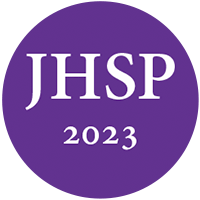The professional home for health service psychologists.
Join a community of 15,000 psychologists and trainees.
Learn it today. Apply it tomorrow.
Connecting you to what you need in your career.
Making a difference.
Seng, E. K. (2018). Using cognitive behavioral therapy techniques to treat migraine. Journal of Health Service Psychology, 44, 68–73.
Migraine is a common and disabling neurologic disorder that often occurs alongside anxiety and mood disorders. Information is provided on the biological basis of the disorder, behavioral factors that influence migraine, and common psychological comorbidities. Psychological treatments based on cognitive behavioral techniques have demonstrated efficacy to treat migraine. Migraine treatment can be incorporated in private practice and integrated care settings.
Registrants can read the full article on CE.NationalRegister.org.
Black, A. K., Fulwiler, J. C., & Smitherman, T. A. (2015). The role of fear of pain in headache. Headache, 55(5), 669-679.
Blumenfeld, A. M., Varon, S. F., Wilcox, T. K., Buse, D. C., Kawata, A. K., Manack, A., . . . Lipton, R. B. (2011). Disability, HRQoL and resource use among chronic and episodic migraineurs: results from the International Burden of Migraine Study (IBMS). Cephalalgia, 31(3), 301-315.
Brantley, P. J., Waggoner, C. D., Jones, G. N., & Rappaport, N. B. (1987). A Daily Stress Inventory: development, reliability, and validity. J Behav Med, 10(1), 61-74.
Burstein, R., Noseda, R., & Borsook, D. (2015). Migraine: multiple processes, complex pathophysiology. J Neurosci, 35(17), 6619-6629. doi:10.1523/jneurosci.0373-15.2015
Carney, C. E., Buysse, D. J., Ancoli-Israel, S., Edinger, J. D., Krystal, A. D., Lichstein, K. L., & Morin, C. M. (2012). The consensus sleep diary: standardizing prospective sleep self-monitoring. Sleep, 35(2), 287-302.
Cohen, S., Kamarck, T., & Mermelstein, R. (1983). A global measure of perceived stress. J Health Soc Behav, 24(4), 385-396.
French, D. J., Holroyd, K. A., Pinnell, C., Malinoski, P. T., ODonnell, F. J., & Hill, K. R. (2000). Perceived self-efficacy and headache-related disability. Headache, 40, 647-656.
Headache Classification Committee of the International Headache Society. (2013). The International Classification of Headache Disorders, 3rd edition (beta version). Cephalalgia, 33(9), 629-808.
Holland, S., Silberstein, S. D., Freitag, F., Dodick, D. W., Argoff, C., & Ashman, E. (2012). Evidence-based guideline update: NSAIDs and other complementary treatments for episodic migraine prevention in adults: report of the Quality Standards Subcommittee of the American Academy of Neurology and the American Headache Society. Neurology, 78(17), 1346-1353.
Holroyd, K., Cottrell, C., O’Donnell, F., Cordingley, G., Carson, B., & Himiwan, L. (2010). Effect of Preventive (B blocker) Treatment, Behavioral Migraine Management or Their Combination on Outcomes of Optimized Acute Therapy in Frequent Migraine: randomized Trial. British Medical Journal(341:c4871), 1-12.
Houle, T. T., Butschek, R. A., Turner, D. P., Smitherman, T. A., Rains, J. C., & Penzien, D. B. (2012). Stress and sleep duration predict headache severity in chronic headache sufferers. Pain, 153(12), 2432-2440.
Houle, T. T., & Turner, D. P. (2013). Natural experimentation is a challenging method for identifying headache triggers. Headache, 53(4), 636-643.
Jacobson, G. P., Ramadan, N. M., Aggarwal, S. K., & Newman, C. W. (1994). The Henry Ford Hospital Headache Disability Inventory (HDI). Neurology, 44, 837-842.
Lipton, R., Bigal, M., Diamond, M., Freitag, F., Reed, M., & Stewart, W. (2007). Migraine prevalence, disease burden, and the need for preventive therapy. Neurology, 68, 343-349.
Martin, P. R., Aiello, R., Gilson, K., Meadows, G., Milgrom, J., & Reece, J. (2015). Cognitive behavior therapy for comorbid migraine and/or tension-type headache and major depressive disorder: An exploratory randomized controlled trial. Behav Res Ther, 73, 8-18.
Martin, P. R., Reece, J., Callan, M., MacLeod, C., Kaur, A., Gregg, K., & Goadsby, P. J. (2014). Behavioral management of the triggers of recurrent headache: a randomized controlled trial. Behav Res Ther, 61, 1-11.
Nestoriuc, Y., Martin, A., Rief, W., & Andrasik, F. (2008). Biofeedback Treatment for Headache Disorders: A Comprehensive Efficacy Review. Applied Psychophysiology and Biofeedback, 33(3), 125-140.
Penzien, D. B., Irby, M. B., Smitherman, T. A., Rains, J. C., & Houle, T. T. (2015). Well-Established and Empirically Supported Behavioral Treatments for Migraine. Curr Pain Headache Rep, 19(7), 34.
Rains, J., Penzien, D., & Lipchik, G. (2006). Behavioral facilitation of medical treatment for headache part II: theoretical models and behavioral strategies for improving adherence. Headache: The Journal of Head and Face Pain, 46(9), 1395-1403.
Rains, J. C., Poceta, J. S., & Penzien, D. B. (2008). Sleep and headaches. Curr Neurol Neurosci Rep, 8(2), 167-175.
Seng, E. K., & Holroyd, K. A. (2012). Psychiatric comorbidity and response to preventative therapy in the treatment of severe migraine trial. Cephalalgia, 32(5), 390-400.
Seng, E. K., & Seng, C. D. (2016). Understanding migraine and psychiatric comorbidity. Curr Opin Neurol, 29(3), 309-313.
Singer, A. B., Buse, D. C., & Seng, E. K. (2015). Behavioral treatments for migraine management: useful at each step of migraine care. Curr Neurol Neurosci Rep, 15(4), 533.
Smitherman, T. A., Penzien, D. B., Rains, J. C., Nicholson, R. A., & Houle, T. T. (2015). Headache(Vol. 30). Boston: Hogrefe Publishing Corporation.
Steiner, T. J., Birbeck, G. L., Jensen, R. H., Katsarava, Z., Stovner, L. J., & Martelletti, P. (2015). Headache disorders are third cause of disability worldwide. J Headache Pain, 16,
Thorn, B. E., Pence, L. B., Ward, L. C., Kilgo, G., Clements, K. L., Cross, T. H., . . . Tsui, P. W. (2007). A randomized clinical trial of targeted cognitive behavioral treatment to reduce catastrophizing in chronic headache sufferers. J Pain, 8(12), 938-949.
Turner, D. P., Smitherman, T. A., Penzien, D. B., Porter, J. A., Martin, V. T., & Houle, T. T. (2014). Nighttime snacking, stress, and migraine activity. J Clin Neurosci, 21(4), 638-643.
Vlaeyen, J. W., Kole-Snijders, A. M., Boeren, R. G., & van Eek, H. (1995). Fear of movement/(re)injury in chronic low back pain and its relation to behavioral performance. Pain, 62(3), 363-372.
Wober, C., & Wober-Bingol, C. (2010). Triggers of migraine and tension-type headache. Handb Clin Neurol, 97, 161-172.
Copyright © 2025 All rights reserved. National Register of Health Service Psychologists










